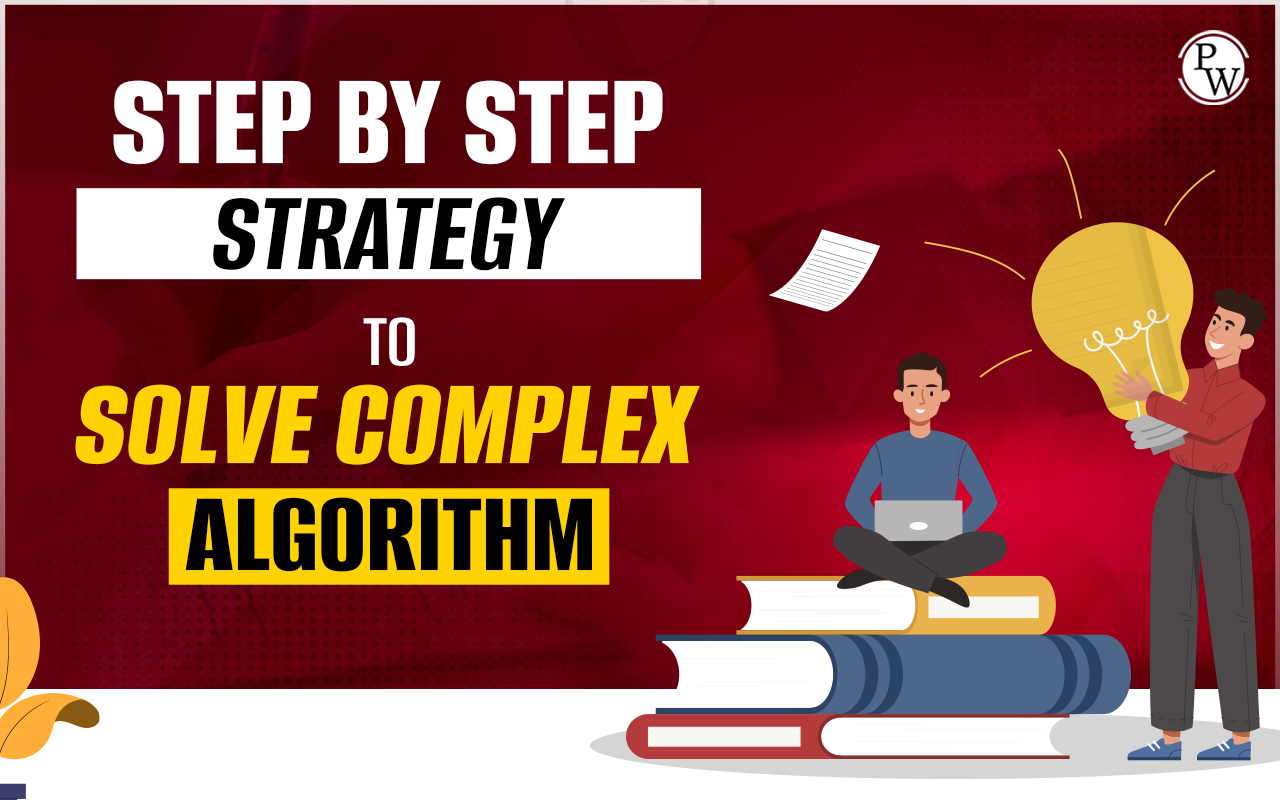A good programmer must know how to structure a problem statement’s algorithm. Solving complex algorithms requires breaking them into more minor levels. After that, solve each step to find the desired output. We need to follow a series of steps while planning our solution. All the steps are important and must not be skipped.
In programming, we call it the divide-and-conquer approach. In this article, we will learn step-by-step strategies to simplify complex algorithms and how to solve them quickly.
Why do we use Algorithms?
Algorithms are fundamentals of computer science. They are used to give an effective solution to the problem statement. A good algorithm uses minimal resources and produces output in significantly less time. You check the problem statement carefully and create an algorithm step by step, not at once. However, let’s just check some of the major usages of Algorithms.
- It helps in problem-solving by providing efficient solutions to complex problems. It makes the code faster by optimizing it.
- It helps determine the computational complexity of a problem statement and helps quantify these difficulties.
- It is used for sorting and searching large datasets efficiently. Some of the significant sorting algorithms are quick sort and merge sort.
- It helps in finding meaningful patterns and information from a large dataset quickly.
- A practical algorithm ensures that with the growth of input size, processing time or resources are minimal. This is important for handling large datasets.
- It is used in decision-making processes.
Recommended Course
- Decode DSA with C++
- Full Stack Data Science Pro Course
- Java For Cloud Course
- Full Stack Web Development Course
- Data Analytics Course
8 Major Steps to Solve Complex Algorithm
A good programmer must know how to create an optimized solution for the given problem statement using minimal resources and processing time. Let us go into a detailed explanation of the steps involved in solving complex algorithmic problems.
Step 1: Understand The Problem Statement
The first step before attempting to solve a problem is to understand the problem statement thoroughly. You need to read the complete statement carefully and with utmost precision. Now, check for the inputs given and the expected outputs. You also need to focus on the highlighted constraints. Identifying the uncertainties in the problem statement by asking questions or checking for more information from a reliable source is crucial.
Step 2: Identify the Appropriate Algorithm
Now, you need to look for the best approach to solving your problem. After understanding the problem statement, the next step is to choose an appropriate algorithmic approach. Now, you need to check the nature of the problem, its size, and its complexity. First, go for the brute force approach and then optimize the solution. We can try divide-and-conquer techniques and dynamic programming, which help break down the problem into smaller subproblems.
Step 3: Plan Your Solution
After choosing a proper algorithm, you must break down your problem into smaller sub-problems. Now, choose the data structures needed to store the intermediate results. You can also write pseudocode or use comments while solving the question.
Step 4: Implement The Algorithm
Now, at this stage, you must translate your planned solution into actual code using a programming language of your choice. Write functions, loops, and conditional statements to execute the steps done in the planning phase. You need to focus on code readability and efficiency while writing. Also, use a meaningful naming format to ensure code clarity and use comments wherever necessary.
Step 5: Analyze Time And Space Complexity
After writing the code, you need to analyze the time and space complexity of the algorithm. Time complexity tells you the execution time of your code and grows with the input size. Space complexity tells the memory usage of the algorithm. You need to keep both of them minimal to optimize your code.
Step 6: Test And Debug
This is the most essential phase while preparing your algorithm. This ensures that your algorithm can deliver the desired output efficiently. After writing your code, you must test it under various custom or predefined test cases. While testing, you can further optimize your code by working on the area where it fails.
Step 7: Optimize And Refine
If your algorithm works correctly but fails for some of the test cases during the testing phase, then now you need to optimize your code to meet the needs. Use optimal data structure to reduce time complexities and memory usage. After optimizing, check for the test cases again to ensure that your code works perfectly under all the test cases.
Step 8: Documentation
After optimizing your code, you must ensure it is properly documented and safe for future reference or collaboration. Also, make sure to add comments at every step of the solution to describe the essential steps. Proper documentation enhances the maintainability of your code. It helps other developers understand the code correctly. You can also add an explanation at the end of the algorithm for reference.
PW Skills Provide Various Platform
FREQUENTLY ASKED QUESTIONS (FAQs)
Q1. What is the use of algorithms in programming?
Ans: An algorithm helps to provide a systematic approach to solving complex problems. With the help of efficient algorithms, we can save resources and time.
Q2. What is the use of time complexity of an algorithm?
Ans: Time complexity in an algorithm tells the execution time required by the algorithm to generate the output. It is inversely proportional to efficiency.
Recommended Reads
Data Science Interview Questions and Answers
Data Science Internship Programs





